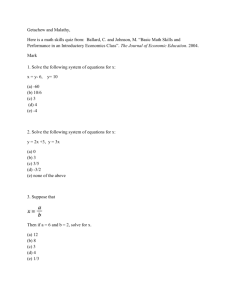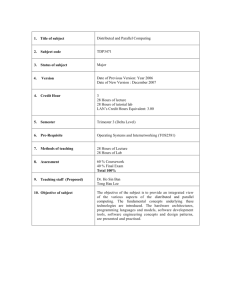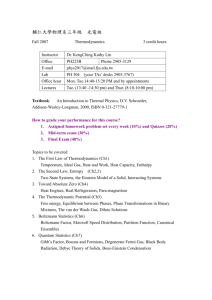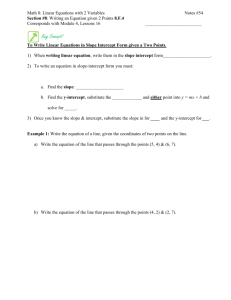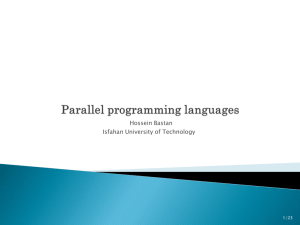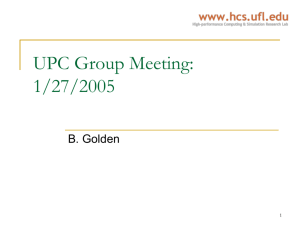Introduction Basic Concepts Other Methods References
advertisement
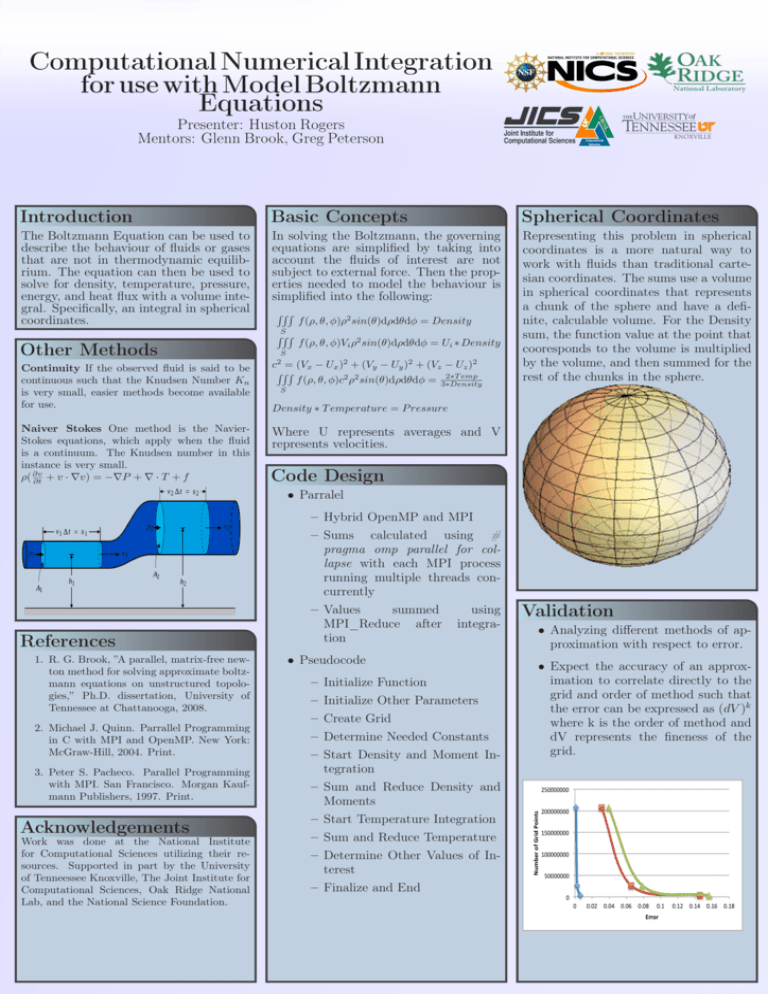
Computational Numerical Integration for use with Model Boltzmann Equations Presenter: Huston Rogers Mentors: Glenn Brook, Greg Peterson Introduction Basic Concepts Spherical Coordinates The Boltzmann Equation can be used to describe the behaviour of fluids or gases that are not in thermodynamic equilibrium. The equation can then be used to solve for density, temperature, pressure, energy, and heat flux with a volume integral. Specifically, an integral in spherical coordinates. In solving the Boltzmann, the governing equations are simplified by taking into account the fluids of interest are not subject to external force. Then the properties needed to model the behaviour is simplified into the following: Representing this problem in spherical coordinates is a more natural way to work with fluids than traditional cartesian coordinates. The sums use a volume in spherical coordinates that represents a chunk of the sphere and have a definite, calculable volume. For the Density sum, the function value at the point that cooresponds to the volume is multiplied by the volume, and then summed for the rest of the chunks in the sphere. RRR f (ρ, θ, φ)ρ2 sin(θ)dρdθdφ = Density S Other Methods Continuity If the observed fluid is said to be continuous such that the Knudsen Number Kn is very small, easier methods become available for use. Naiver Stokes One method is the NavierStokes equations, which apply when the fluid is a continuum. The Knudsen number in this instance is very small. ∂v ρ( ∂t + v · ∇v) = −∇P + ∇ · T + f RRR f (ρ, θ, φ)Vi ρ2 sin(θ)dρdθdφ = Ui ∗ Density S 2 c = (Vx − Ux )2 + (Vy − Uy )2 + (Vz − Uz )2 RRR 2∗T emp 2 2 f (ρ, θ, φ)c ρ sin(θ)dρdθdφ = 3∗Density S Density ∗ T emperature = P ressure Where U represents averages and V represents velocities. Code Design • Parralel – Hybrid OpenMP and MPI – Sums calculated using # pragma omp parallel for collapse with each MPI process running multiple threads concurrently References 1. R. G. Brook, ”A parallel, matrix-free newton method for solving approximate boltzmann equations on unstructured topologies,” Ph.D. dissertation, University of Tennessee at Chattanooga, 2008. 2. Michael J. Quinn. Parrallel Programming in C with MPI and OpenMP. New York: McGraw-Hill, 2004. Print. 3. Peter S. Pacheco. Parallel Programming with MPI. San Francisco. Morgan Kaufmann Publishers, 1997. Print. Acknowledgements Work was done at the National Institute for Computational Sciences utilizing their resources. Supported in part by the University of Tenneessee Knoxville, The Joint Institute for Computational Sciences, Oak Ridge National Lab, and the National Science Foundation. – Values summed MPI_Reduce after tion using integra- • Pseudocode – Initialize Function – Initialize Other Parameters – Create Grid – Determine Needed Constants – Start Density and Moment Integration – Sum and Reduce Density and Moments – Start Temperature Integration – Sum and Reduce Temperature – Determine Other Values of Interest – Finalize and End Validation • Analyzing different methods of approximation with respect to error. • Expect the accuracy of an approximation to correlate directly to the grid and order of method such that the error can be expressed as (dV )k where k is the order of method and dV represents the fineness of the grid.



